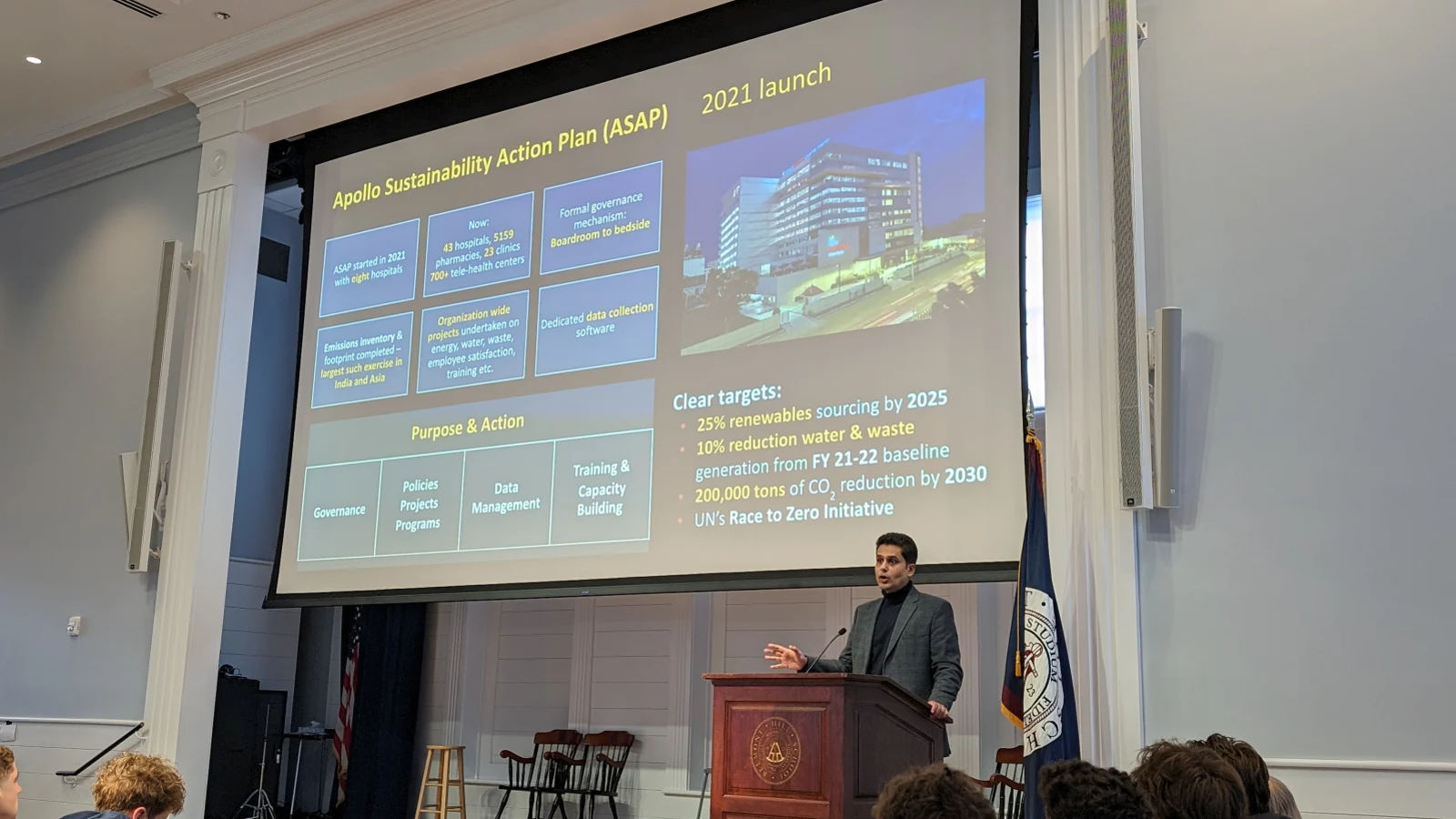On February 16th, Dr. Karan Thakur stepped up onto the Chapel stage. Smiling, he opened with one simple word: “Namaste.” Using this traditional Indian greeting, Dr. Thakur made it clear that the goal of his speech was not only to teach the audience about his professional career but also to offer insight into his personal life. As this year’s Kageyama-Hunt Global Speaker, Dr. Thakur focused his speech on how he has led a life of activism and service in the healthcare field, calling on the audience to take agency in their own lives.
Born and raised in India, Dr. Karan Thakur started his career as a physician. However, as he watched air and water pollution infect his homeland, he began to question if he was doing enough to help his patients. Looking at the Hippocratic Oath, which states that one should “do no harm”, he realized that treating individual patients with the unsustainable healthcare practices of today might actually be harming others, while pushing for change in the way the world conducts healthcare from an administrative level could bring about good. Moreover, Dr. Thakur looked to the Ashoka Chakra for advice. The Chakra, which many recognize as the symbol on the Indian flag, represents the harmony between one’s beliefs and actions. In the middle lay one’s core beliefs and virtues. The spokes that branch out from the middle are one’s actions. Finally, the periphery of the Chakra represents how one’s actions are perceived by the rest of the world. Dr. Thakur used this symbol to analyze if he was on the right path. Were his core beliefs and principles in line with his actions? And were his actions having the proper effect?
Thinking about the Hippocratic Oath and Ashoka Chakra, Dr. Thakur decided to pivot his career towards a life of activism for sustainability in the healthcare sector. He sought to help the Apollo Group Hospital reduce its carbon footprint across its operation. With Gandi and the Boston Medical Center as his inspiration, he launched the Apollo Sustainability Action Plan (ASAP), which initiated projects to reduce energy and water consumption and waste emissions. Starting in eight hospitals, ASAP has quickly grown to involve 43 hospitals, over 5,000 pharmacies, 23 clinics, and 700 telehealth centers. Then, in 2022, Dr. Thakur was chosen as the Eisenhower Fellowships Global Fellow, enabling him to study how the American healthcare system is combating climate change.
Having outlined his life story, Dr. Thakur brought his talk back to the Ashoka Chakra, issuing a call to action to the audience in the process. First, he asked the crowd to explore their core beliefs in principles as he did when thinking about the Chakra. Then, he implored the group to think about how their actions reflect these principles. He encouraged everyone to ensure that their beliefs and actions were in harmony and that they were achieving their desired result. He emphasized that you should never be afraid to return to square one and that you must continue to re-evaluate your choices and actions throughout your life. Finally, he closed his address with a quote from Henry David Thoreau: “If one advances confidently in the direction of his dreams, and endeavors to live the life which he has imagined, he will meet with a success unexpected in common hours.”
Thakur’s talk was the center of conversation for most of the day. One Form V student, Connor Emmert, remarked that the Chapel “opened his eyes to the problems facing the healthcare sector”. Meanwhile, when asked about his thoughts on the speech, Mr. Harvey stated that “Thakur offered an insightful view of the challenges not only India but our global community faces that offered an important message for students to hear.” With the speech being so relevant to issues tackled in classes across campus, teachers such as Mr. Harvey took time out of their classes to further discuss Thakur’s remarks. Overall, the Chapel was an incredibly informative and valuable experience, and The Panel would like to thank Dr. Thakur for speaking to the school, and Bill Hunt and Yuko Kageyama for making this opportunity possible.





